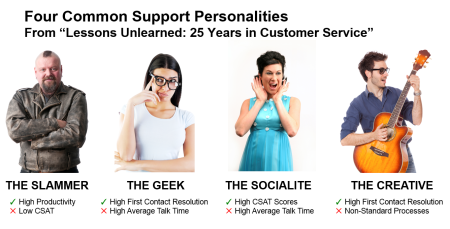Yesterday was the opening day of Technology Services World, and our intrepid events manager, Christi Holzer, sent me the number of attendees for each of the breakout sessions. I always like to publish this info, as clearly people vote with their feet, and the sessions with the highest attendance represent the hottest topics and/or most critical business issues. There was standing room only in some breakouts, with over 100 attendees. Here’s a look at the five sessions from yesterday with the highest attendance:
Operational Best Practices: Essential “Customer Impact” Levers in Support and Professional Services. This session focused on important customer impact levers for optimal support and professional services performance. TSIA members discussed what best-in-class looks like, how to implement and manage those functions, and the impact they will have on customers and your business. This session covered key areas of support and professional services, and dug a little deeper into the “what” and “how” for each. Presenters: Tom Pridham – SVP & GM, TSIA; Manny Vilarino – Senior Manager, Advanced Services, Cisco Systems; Dayton Semerjian – GM, Global Customer Success & Support, CA Technologies.
What Are the Key Initiatives and Practices Support Organizations Are Using to Drive Customer Adoptions and Business Outcomes? The rapid rate of change in the technology industry is forcing support organizations to look at their current processes, people, and products. The historic processes and measurements are no longer enough to drive the value customers are demanding, and support organizations are being asked to continue to provide traditional break-fix service but reinvent themselves as they do so. Companies are being asked to drive the highest levels of performance (financial, satisfaction, adoption, and loyalty). This session reviewed the new structures, processes, results, and metrics being implemented and measured, and shared industry averages as well as Pacesetter performance. Presenter: Judith Platz – Vice President of Research for Support and Success, TSIA.
Expand Selling: Accelerating Revenue Growth through Efficient Selling Models and Motions. The concept of expand selling as a formal initiative is rapidly emerging in the technology industry. Companies are beginning to find ways to accelerate revenue growth with existing customers in a more formal manner, and to do so cost efficiently. Expand selling is different than landing a new technology sale with a customer, and involves more than just selling additional products and services to existing customers. Expand selling can involve helping customers achieve desired business outcomes with their existing technology, which is turn will lead to accelerated revenue growth at scale. To achieve this objective, we see the need for transformation across sales, services, and customer success, and for changes in how these functions interact with one another. This session explored the rapidly emerging concept of expand selling, and shares TSIA’s most recent research findings that can help companies navigate this important transformation. Presenter: Mark Middlekamp – VP, Research, TSIA.
Customer Success: Leverage Product Usage and Consumption Analytics for Customer and Business Value. In this session, Tony Brucha, director customer success, and Roxana Fitzmaurice, senior manager, Global Enterprise Theatre (GET) accounts at Cisco WebEx, described the WebEx customer success function and the application of Usage Analysis Scorecards and Templates as part of the Lifecycle Account Management process (Onboard, Adopt, Expand, Renew). The Usage Analysis Scorecards and Templates are leveraged to increase collaboration platform adoption, lead generation, and upsell and cross-sell opportunities for some of Cisco WebEx’ largest customer accounts. Tony and Roxana described the usage data collected, the analysis and comparisons conducted by customer and industry verticals, and the adoption services activities undertaken with the customer which result in effective customer value, business reviews, and increased business revenue.
Looking to Improve Product Adoption, Customer Satisfaction, and 97%+ Customer Retention? After seeing customer retention rates decline and experiencing many internal, resource-consuming, fire-drills to address customer issues, Imprivata took a bet and implemented a Customer Advocacy function. Customer Advocates are responsible for working with customers to drive end-user adoption of our solutions, understand deployment pain points, recommend solutions and best practices, establish ongoing communications with the customer, and function as a primary post sales point of contact. Internally, Customer Advocates operate as customer champions and orchestrate satisfactory outcomes across sales, services, and support. This presentation shared their approach for implementing a Customer Advocacy function as well as best practices and lessons learned, including: building the strategy and customer segmentation; hiring profiles and onboarding strategies; creating an integrated account team across sales, renewals, and customer advocates; establishing cross-functional account responsibility and collaboration; and measuring impact, including KPIs. Presenter: Laura Carson – VP Customer Advocacy, Imprivata.
I’ll be back tomorrow to report the top attended sessions from today. Thanks for reading!


